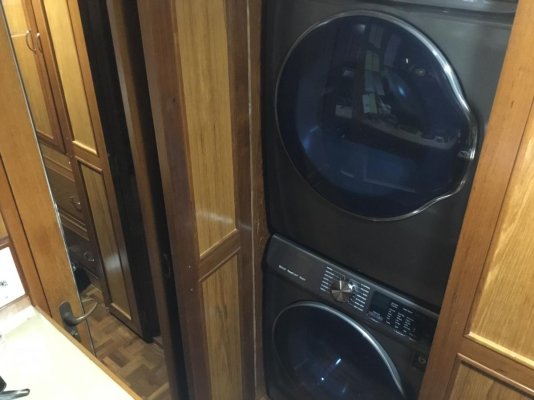tiltrider1
Guru
- Joined
- Aug 2, 2017
- Messages
- 4,345
- Location
- Pacific North West
- Vessel Name
- AZZURRA
- Vessel Make
- Ocean Alexander 54
My laundry center shares a 30A circuit breaker with an auxiliary boiler. Both pull 24A when in use. I have a rotary switch that allows me to use one or the other. When the auxiliary boiler goes off line the diesel boiler kicks in. This system has worked fine for years.
I am in the process of replacing the laundry center with new compact stackables. The problem, all new compact units have microprocessors. My fear is that every time I switch the power to the laundry I will have to reprogram the time and wash cycles. An easy answer to this would be a load shedding device that drops the auxiliary boiler when the dryer kicks in.
I see Paneltronics has a load shedding module. Does anyone have any experience with it or experience with another load shedding device?
I am in the process of replacing the laundry center with new compact stackables. The problem, all new compact units have microprocessors. My fear is that every time I switch the power to the laundry I will have to reprogram the time and wash cycles. An easy answer to this would be a load shedding device that drops the auxiliary boiler when the dryer kicks in.
I see Paneltronics has a load shedding module. Does anyone have any experience with it or experience with another load shedding device?

